Sober up by looking at these Russian and Soviet anti-booze ads
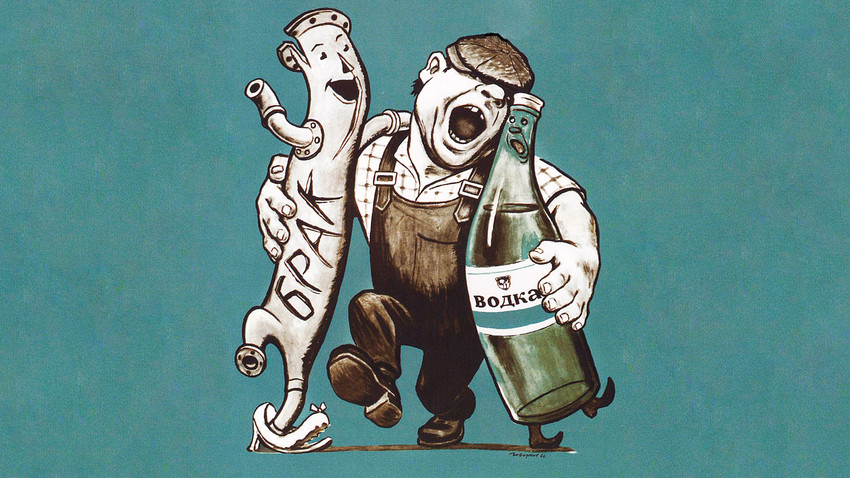
The first anti-alcohol campaign in Russia was ignited by the peasants in 1858. They revolted throughout the country’s 32 regions, destroying countless inns in protest against the government’s alcoholization policy. The peasants were against more and more inns and bars appearing in villages. The government opened the watering holes to raise more taxes and fill the country's budget after the devastating Eastern (Crimean) war, but the peasants saw because of drinking, they become impoverished and lazy. So the revolts were not against taxes, but against the very fact of selling booze. Only the army could quell the violence.
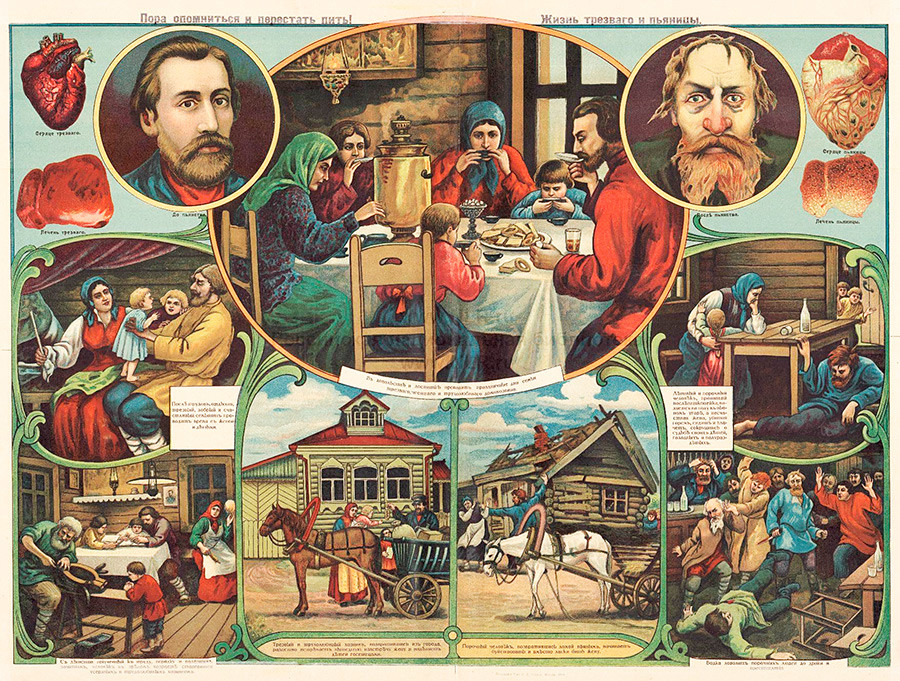
The life of a sober man vs the life of a drunkard
Public DomainDuring the second half of the 19th century the first sobriety groups started appearing, organized by the intelligentsia and medics. Anti-alcohol magazines were published and some limitations were placed on the sale of alcohol. During the early 20th century, campaigns to prevent school children drinking also appeared, showing there was a problem with alcoholism among the youth.
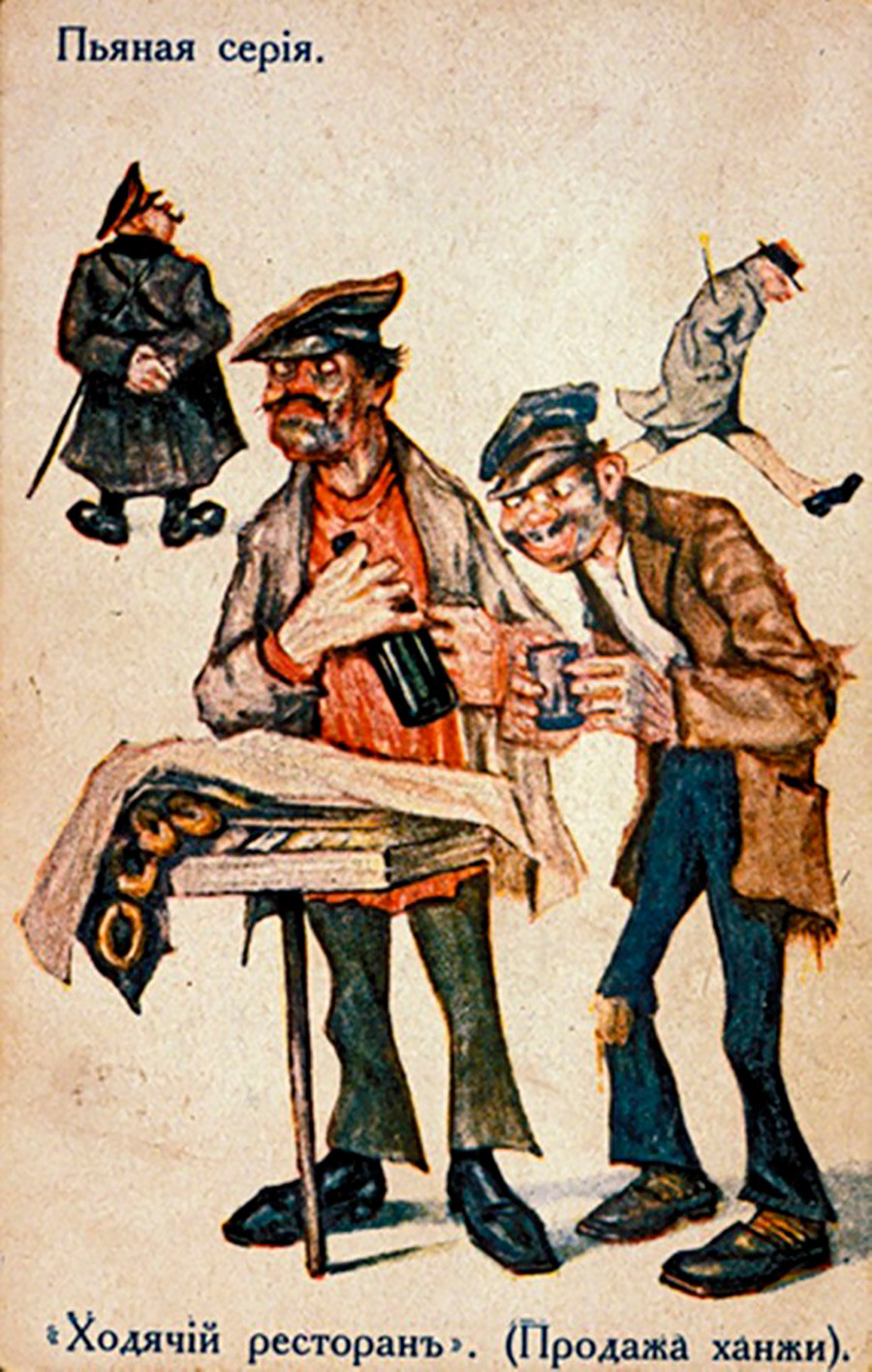
From “The Drunk Series” – A Moveable Restaurant (Selling On the Street)
Public domainThe problem was considered so serious that Grand Duke Konstantin Konstantinovich himself, a member of the Russian Imperial family, became the chairman of Russia’s Teetotaller Union. From August 1914 Nicholas II banned the production and sale of alcohol.
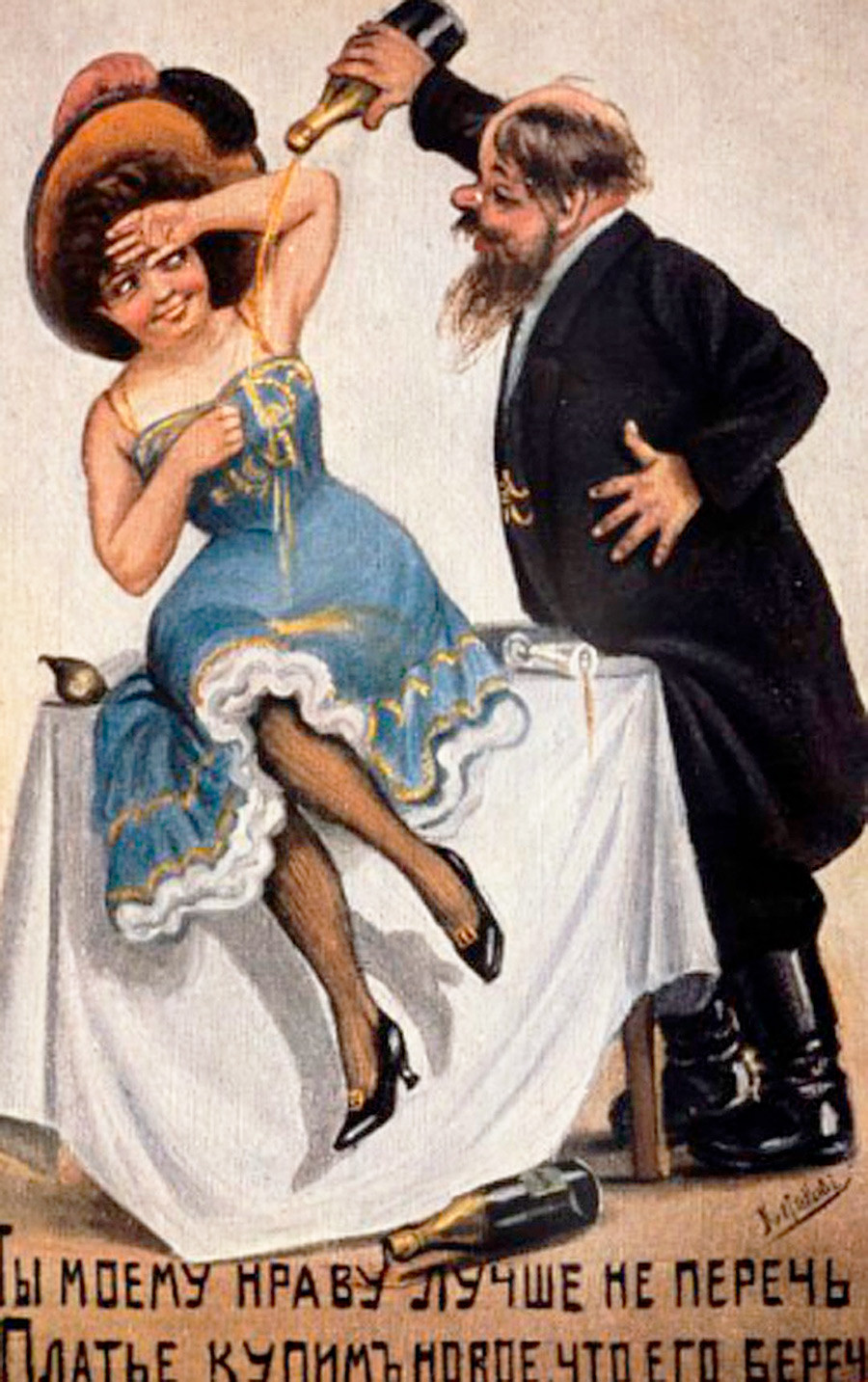
From “The Drunk Series” – A Moveable Restaurant (Selling On the Street)
Public domainIn 1917 the Soviet government banned vodka, wine, and beer production, but from the beginning of the 1920s, the ban was gradually lifted.
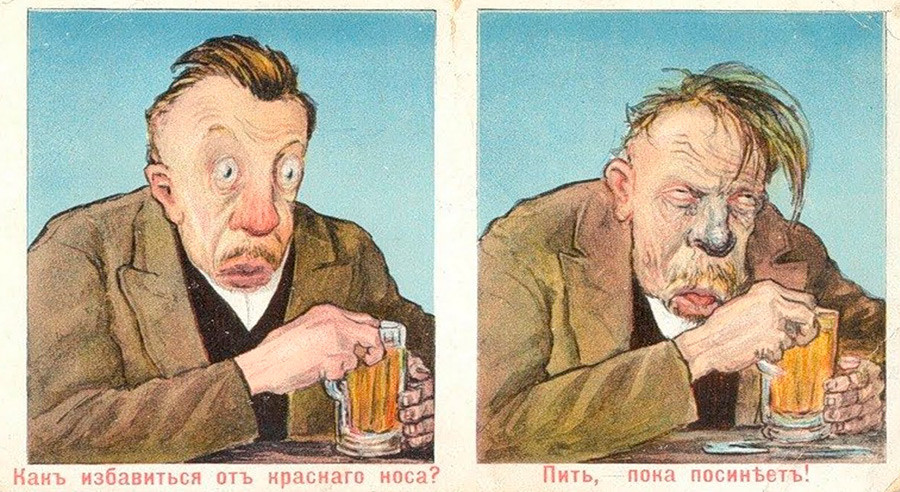
“How to get rid of a red nose? Drink more, until it turns blue!”
Public domain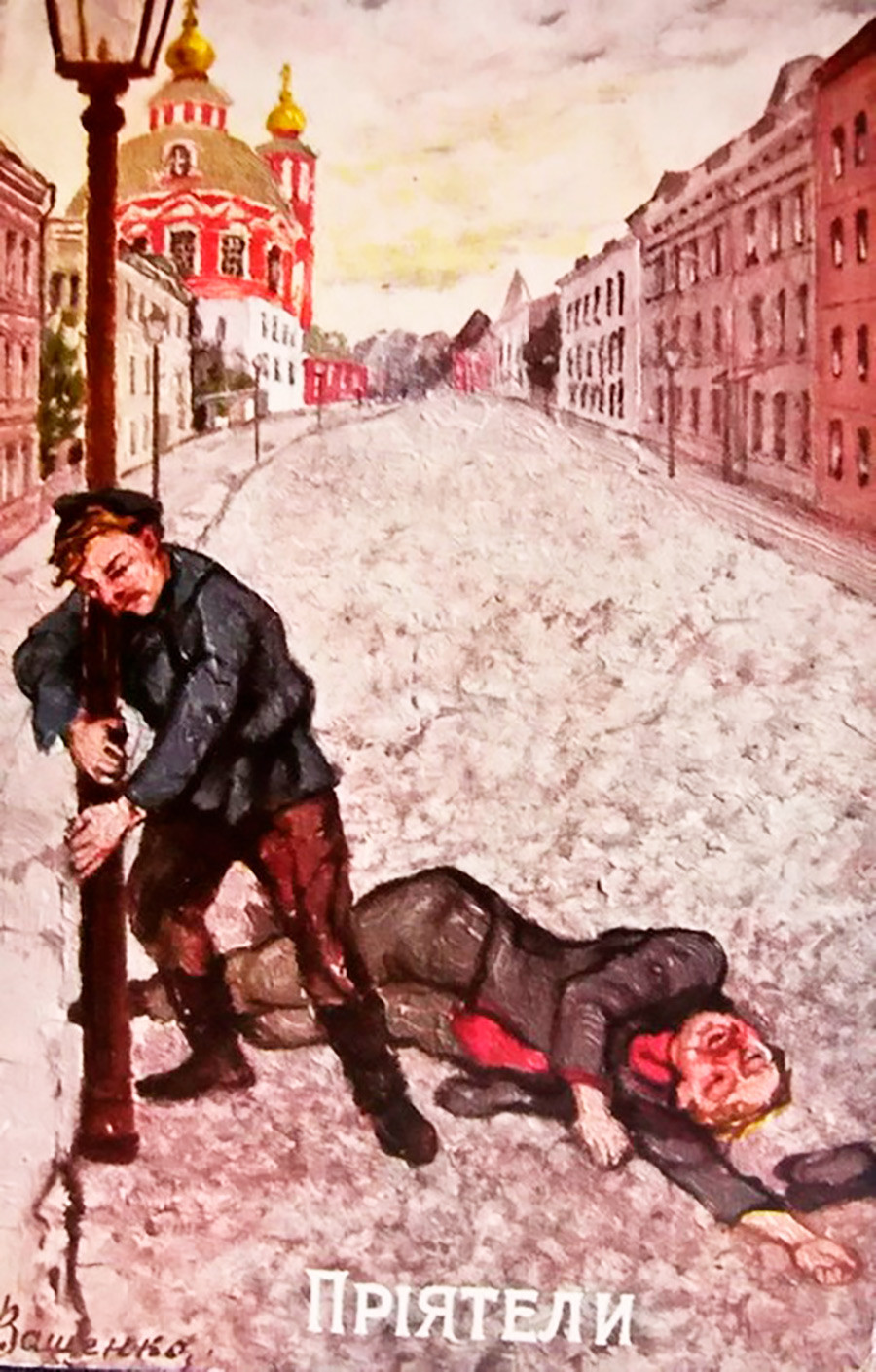
'Buddies'
Public domainThere were three major anti-alcohol campaigns in the USSR - in 1958, in 1972, and the most remembered one, the Gorbachev campaign of 1985-1990. It was unprecedented in scope: The sale of alcohol was slashed (vodka could only really be purchased in exchange for alcohol stamps), production reduced, and militia inspected the parks and streets, fining and detainting those caught in the act.

“Not a single drop”
Public domain
“And they say it’s we who are pigs…”
Public domain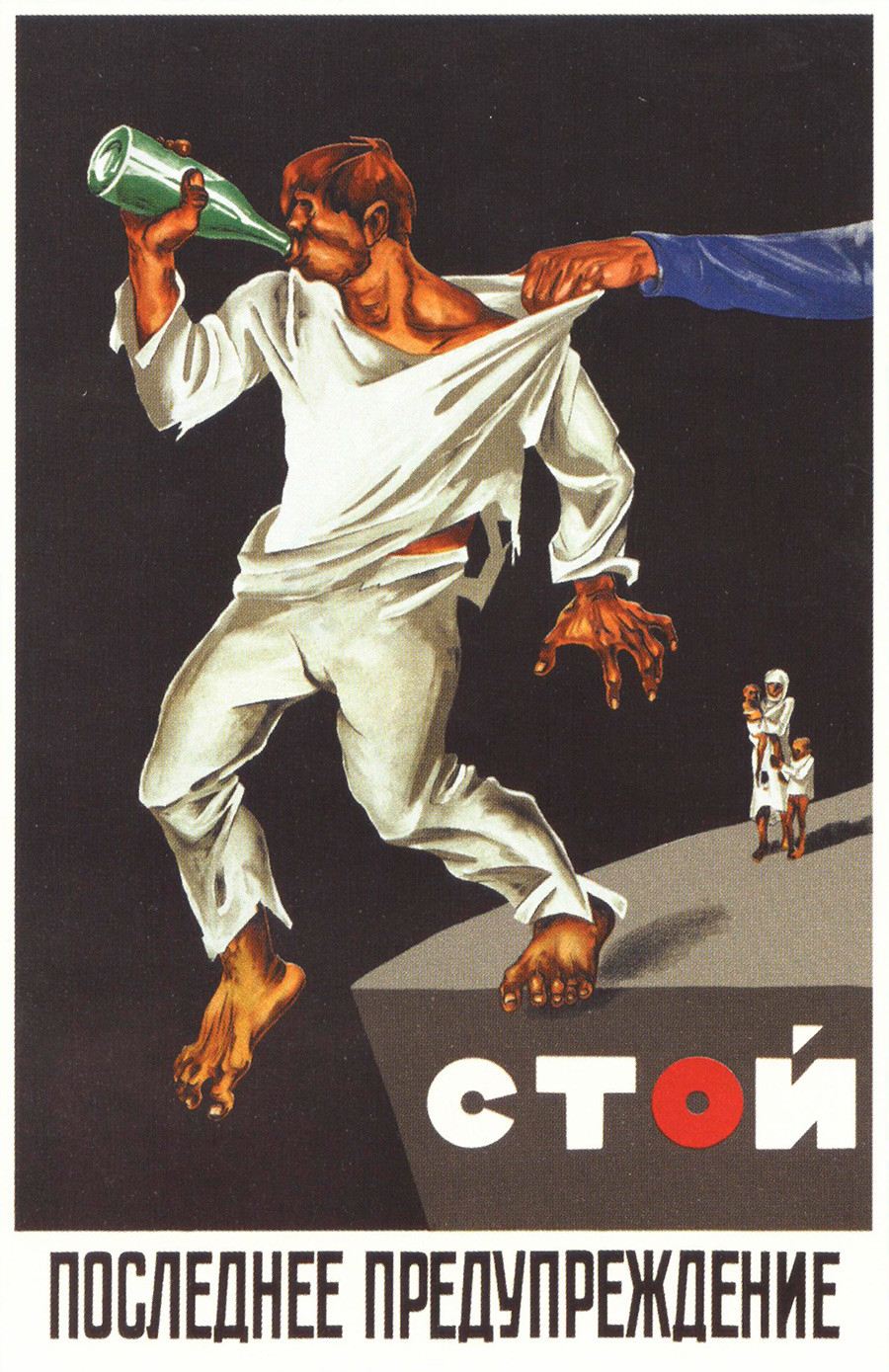
“Stop! Last warning”
Public domain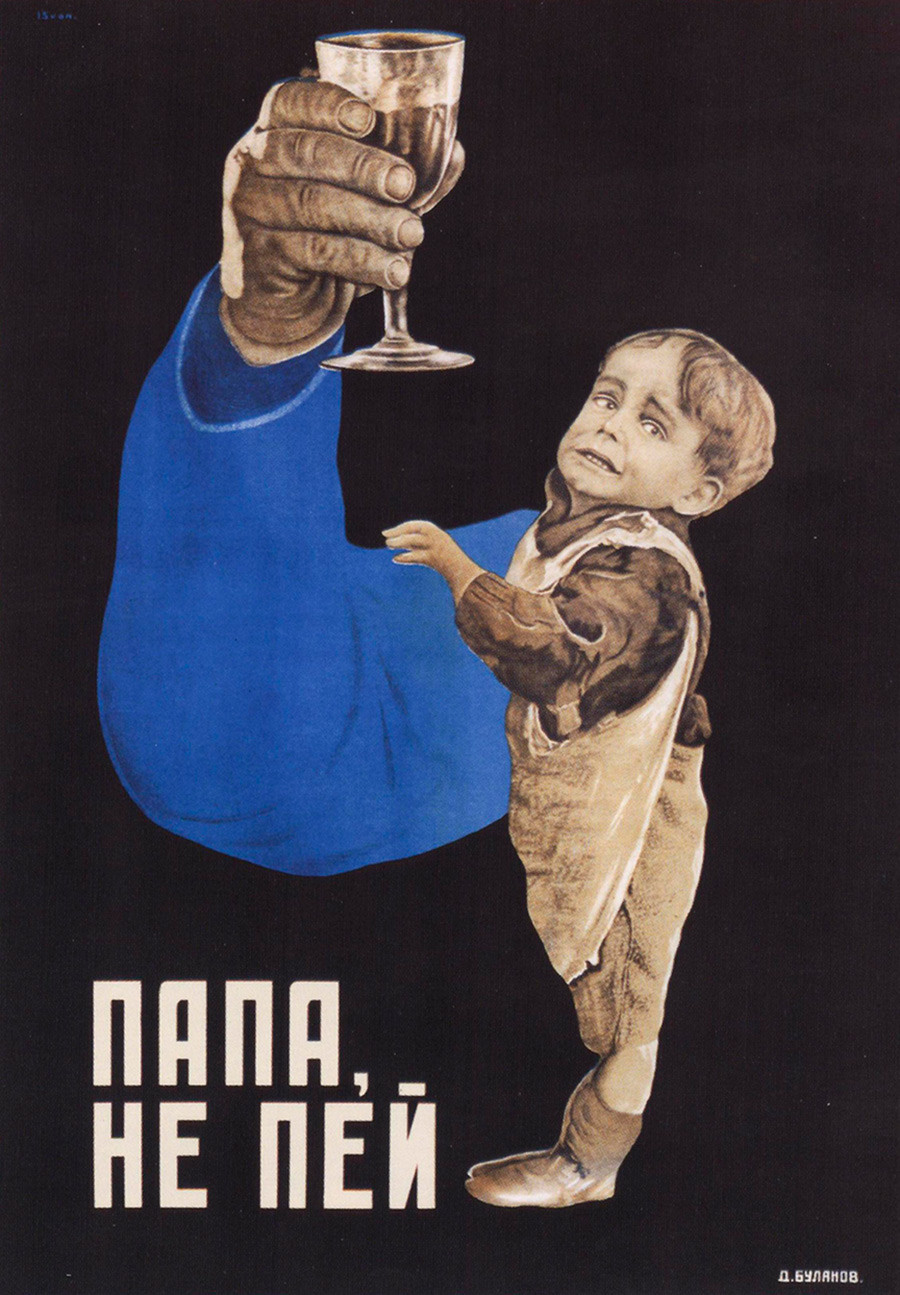
“Daddy, don’t drink!”
Public domain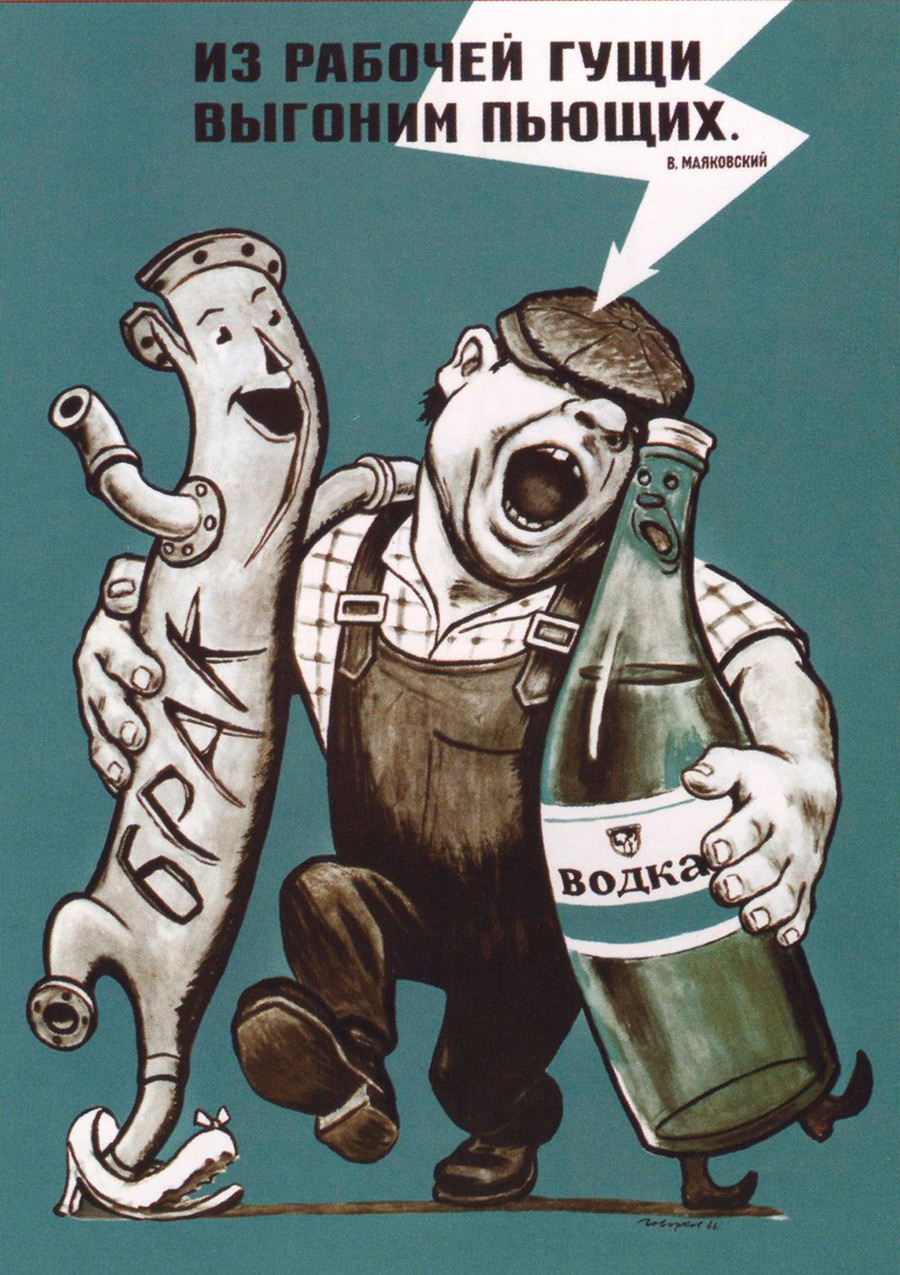
“Let’s expel drunkards from workers’ community!” (the scribble on the pipe reads ‘defect’)
Public domain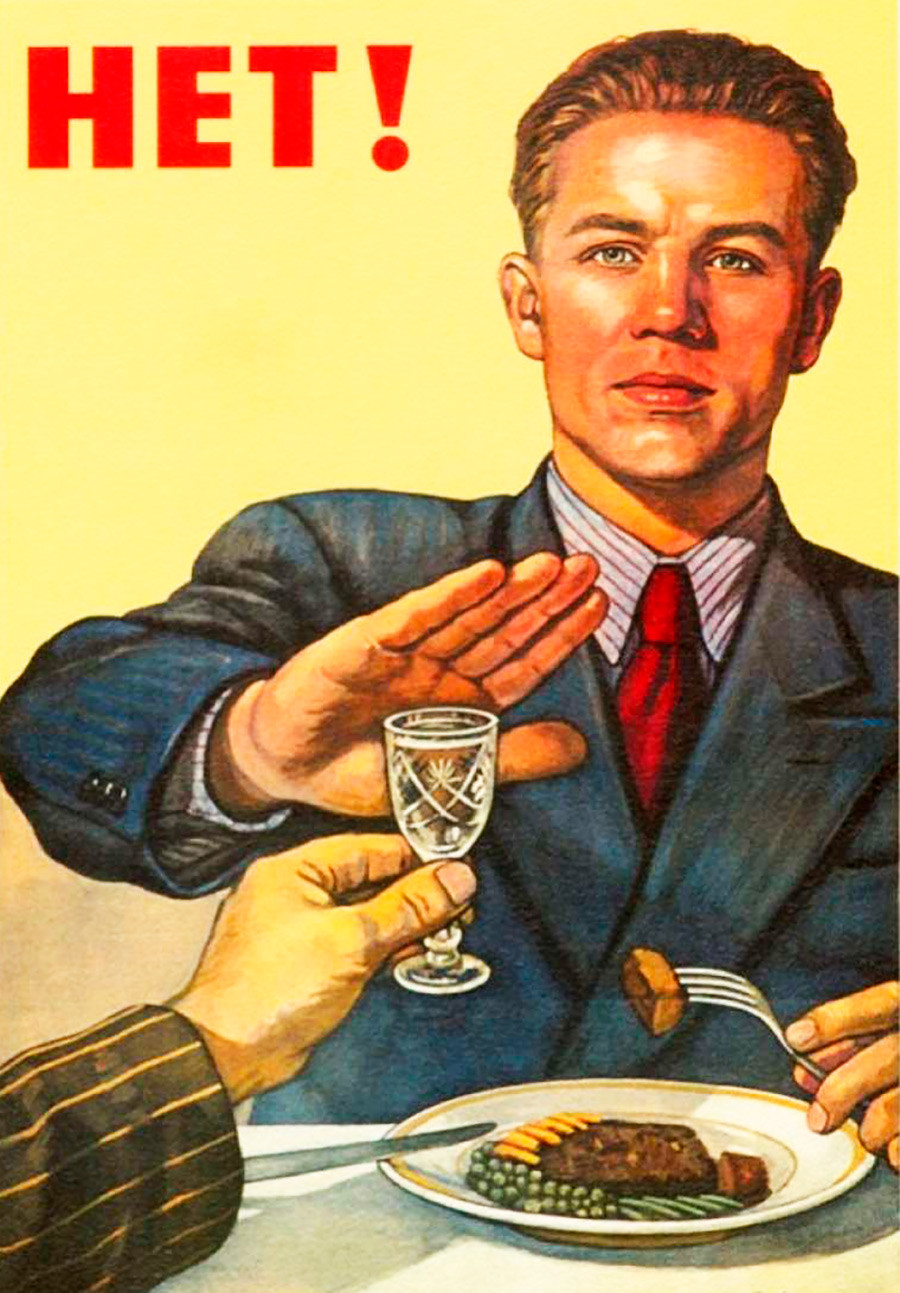
“NO”
Public domain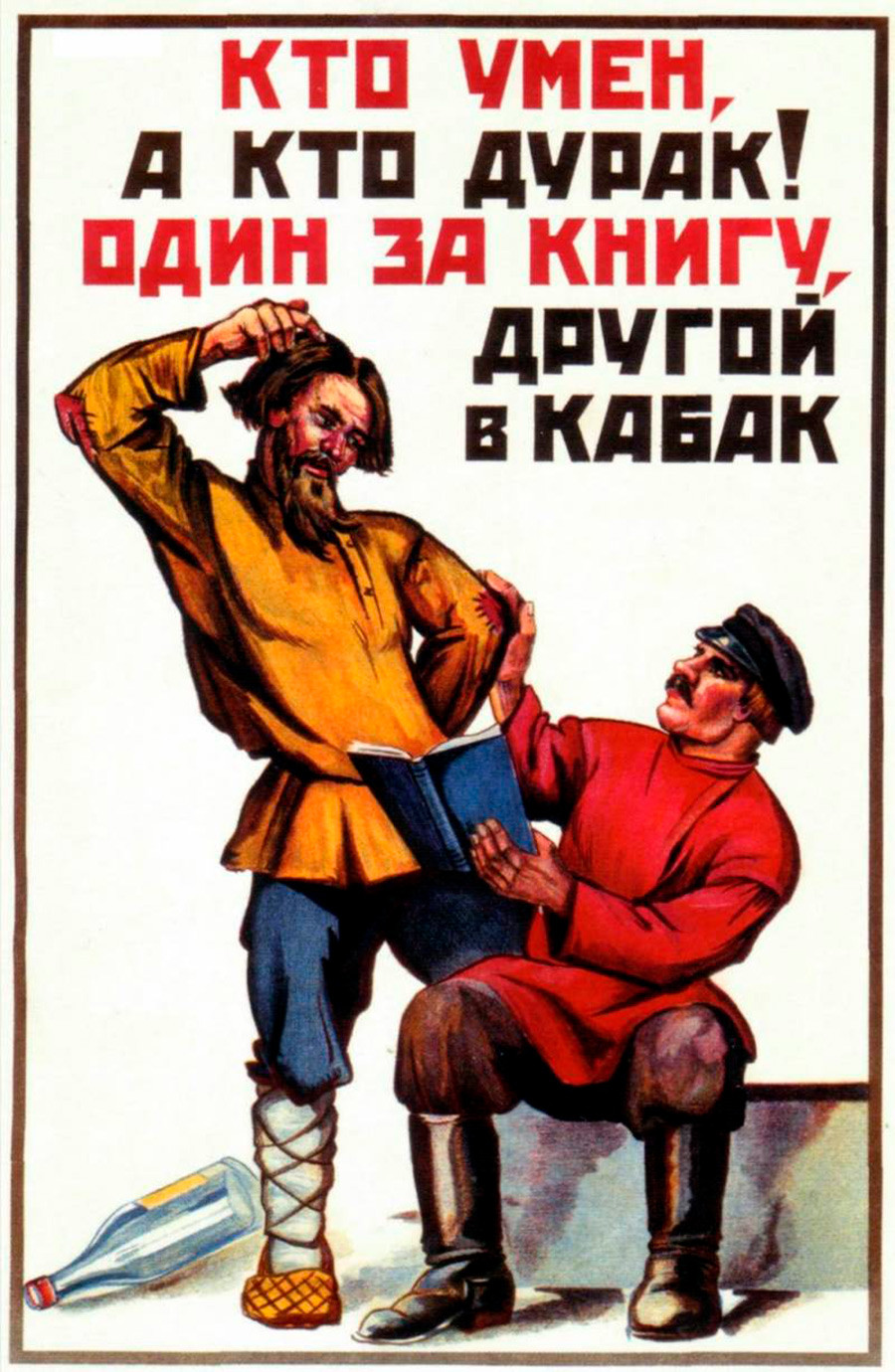
“Somebody’s clever, somebody’s a fool – one reads a book, and the other one goes to the pub”
Public domain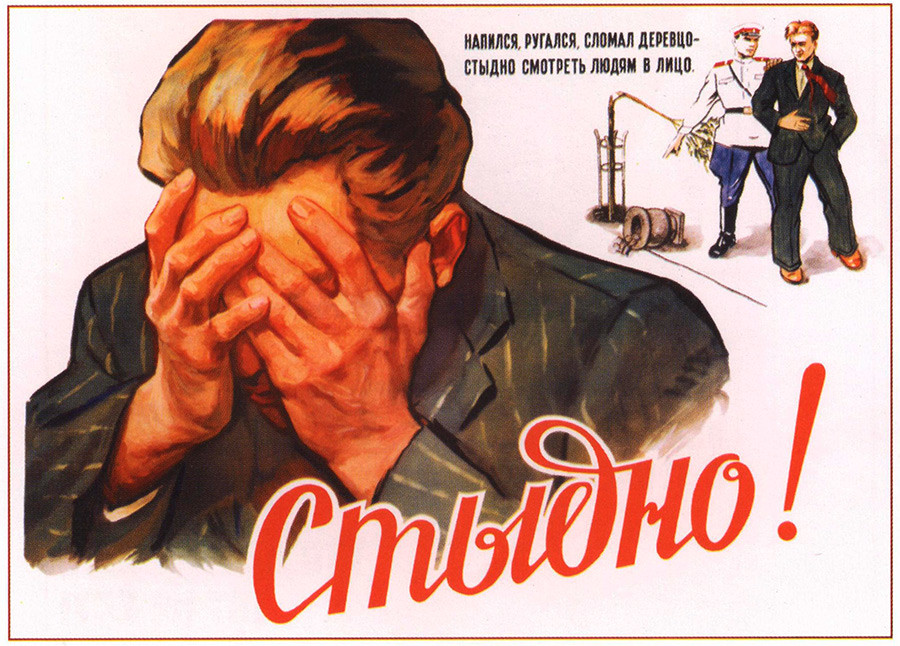
“Got drunk, got in a brawl, broke a tree – it’s a shame to look people in the eye! Shame!”
Public domain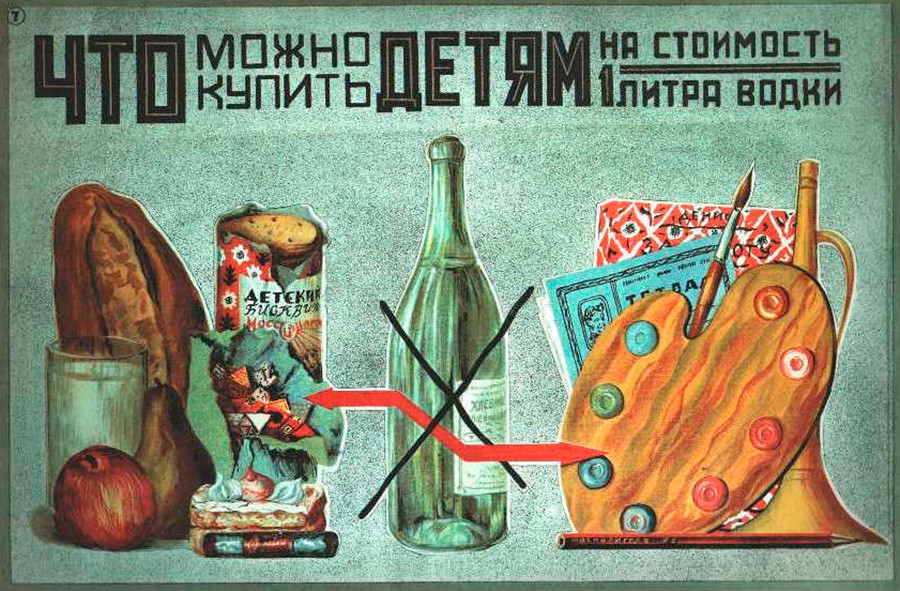
“What one can buy for one’s children at the cost of 1 litre of vodka”
Public domain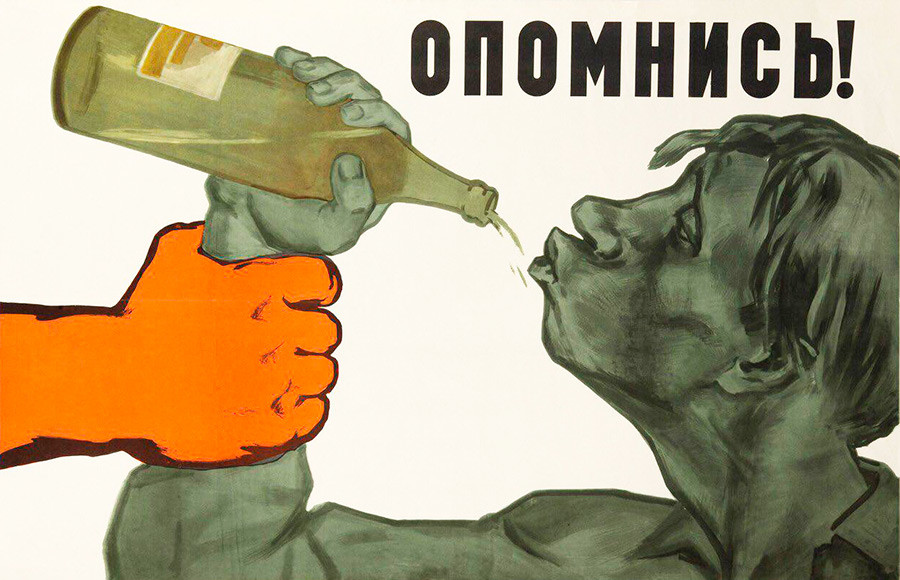
“Wake up!”
Public domain
“She swapped it” (the inscription on the blanket reads: ‘People’s court decision on deprivation of the right of maternity’)
Public domain
The poster behind his back says: ‘You didn’t fulfill the work norms – you’ve failed the team! Stop binges!’ The inscription below says: ‘Drunk today, drunk tomorrow – work plan is disrupted!’
Public domain
‘My mother loves me not’
Public domain
‘We shall overcome!’, the inscription says. The serpent is labeled with ‘drinking’
Public domain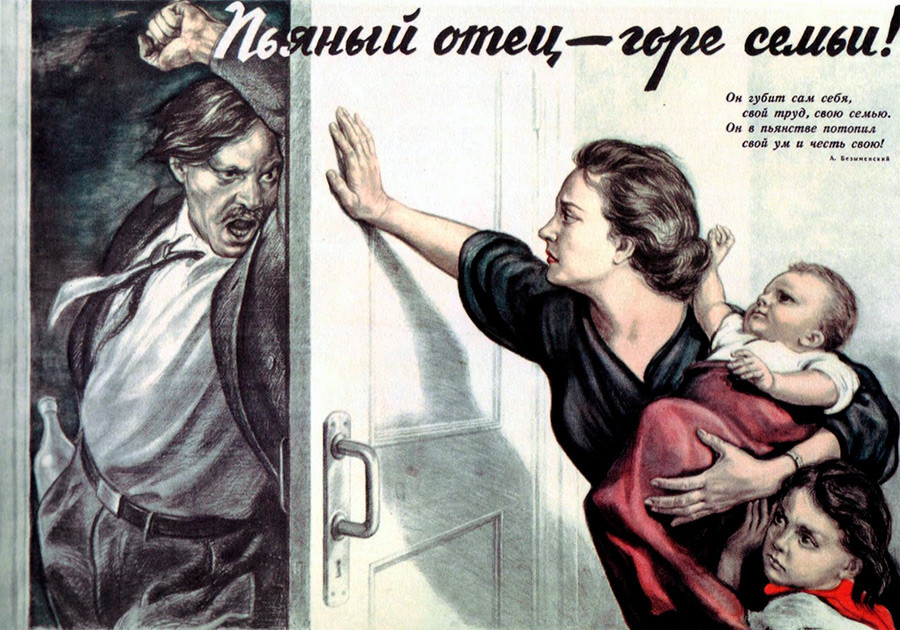
‘Drunk father – grief for the family!’ The short poem to the right goes: ‘He destroys himself, his work, his family. He drowned his wit and his honor in drink’.
Public domainIf using any of Russia Beyond's content, partly or in full, always provide an active hyperlink to the original material.
Subscribe
to our newsletter!
Get the week's best stories straight to your inbox